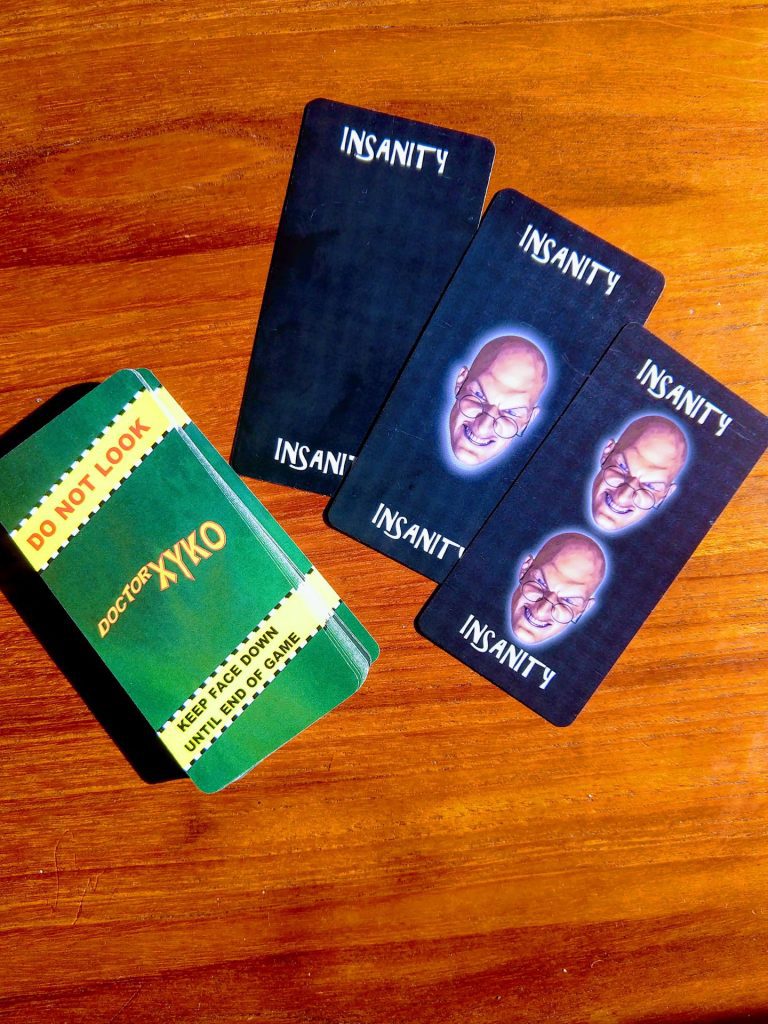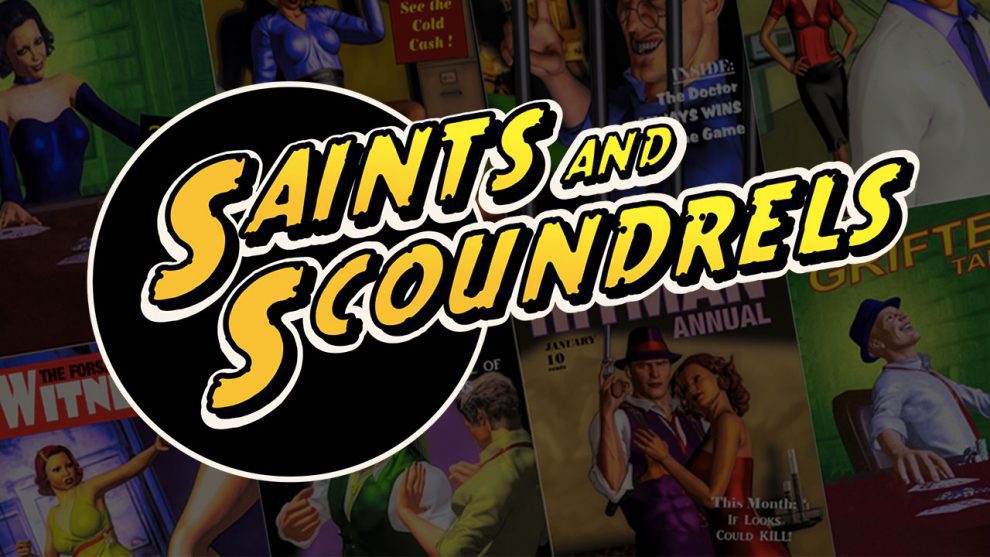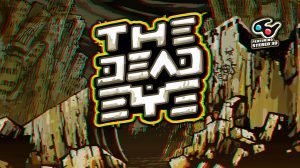Disclosure: Meeple Mountain received a free copy of this product in exchange for an honest, unbiased review. This review is not intended to be an endorsement.
I was going nowhere fast on this case. It was so long since I had any leads that I may have forgotten what a private eye does for a living. Maybe I had amnesia. If amnesia was another way to say “bad luck.”
I was all balled up. My key witness was afraid to sing. The informant fizzled like a firecracker in a gimlet – maybe the hitman got to them first. I was even conned out of a C-note by a two-bit grifter like it was my first day at shamus school.
The one-way, dead-end clues I sprinkled all over Star City wouldn’t tangle up the other gumshoes’ laces for much longer. It was only a matter of time before they bloodhounded the East Side Strangler’s scent – and found him before I did.
I was fresh out of corners to cut and down to my last bent cigarette in a crumpled pack of Luckys. And I didn’t trust myself to light the match.
There was one last gasp: I could see Dr. Xyko in the big house. Maybe he had more secrets to share. Missing evidence, or details about the killer. The catch? Talking to Dr. Xyko meant inviting him inside; and I don’t mean my office. The longer he spent in my head, toying with my mind, the greater the chance that he wouldn’t give it back in one piece. If that happened I’d pray for amnesia. Because after Xyko was through with me I might need a straitjacket and insanity plea for my OWN trial…
In Saints and Scoundrels you are a private eye in Star City hot on the trail of The East Side Strangler, a dangerous serial killer. Players race to gather evidence by playing movement cards that propel them up the Evidence Track, while trying to block other players from doing the same.
The game’s big hook: bluffing. During gameplay cards are always played face down and players can lie about the cards they play. Bluffing (and counter-bluffing) at the right time sends you up the Evidence Track quickly. However, if you are challenged and caught in a lie, the other players will move further and faster than you!
Players can press their luck by visiting Dr. Xyko, a brilliant and unstable criminal mind (think Hannibal Lecter) who offers high-risk, high-reward movement during the game. And those who cleverly plan ahead may acquire Case File Cards that offer crucial, game-changing effects.
Are you a Saint, gathering evidence truthfully to move methodically? Or are you a Scoundrel, telling lies both big and small to gain ground in huge bites? And will you solve the case even at the risk of going insane? The path to victory is your choice!
Pulp Fiction
Saints and Scoundrels harkens back to the golden age of pulp noir fiction published in the 1920’s and 1930’s. These cheap fiction periodicals were known for sensational and often lurid subject matter. Many famous authors got their start in the pulps, including luminaries such as Dashiell Hammett, Raymond Chandler, and Mickey Spillane.
The game’s artwork pays loving tribute to this pulp era of detective and crime fiction. Of note are the Saints and Scoundrels cards themselves; their illustrations depict imagined pulp-styled magazine covers that tease their dark contents. And the card types also double as magazine titles. Clever!

A Blueprint for Murder – Saints and Scoundrels Cards
There are four types of cards in the 49-card Saints & Scoundrels deck:
Movement Cards: Witness, Analyst, and Informant cards permit players to move their pawns 2/3/4 spaces, respectively. There are six of each type in the deck.
Menace Cards: Each Movement Card can be blocked/cancelled by a specific Menace Card: Thugs block Witness cards, Saboteurs block Analyst cards, and Hitmen block Informant cards. There are three Menace Cards of each type.
Grifter Cards: Eighteen of them. These technically do nothing: they are neither Movement nor Menace Cards. However, there’s a reason they are called Grifters: since one plays cards face down and can bluff indiscriminately, playing the Grifter-as-Movement or Grifter-as-Menace is the high-octane fuel that keeps the game’s core engine humming.
Madmen Cards: (4 total): like Grifters, the Madmen Cards have no inherent special power. However, they are the only cards in the deck with all three different color bands on them. They are useful when you enlist Dr. Xyko’s “help” for a power move during the game!
Criss Cross: Bluffs, Challenges, and Counter-Challenges
Each player is dealt two cards to start the game, and all pawns begin on the “1” space of the Evidence Track. Each turn the Active Player has two options. They may discard one card to move one space on the Evidence Board. Or more commonly, they may play a card face down and declare which type of Movement Card they have played. Their declaration can be the truth or a brazen lie.
After the Active Player declares their Movement Card, one other player (and only one) chooses from the following actions: 1) Challenge, 2) Play a Menace Card to block the Active Player’s card (which could trigger a Counter-challenge), Alternatively, all other players may 3) Pass.
Challenging: Any one non-Active Player may Challenge the Active Player’s claim. Example: if the Active Player declares they played an Informant, then one other player can Challenge if they believe this is a bluff. The Challenge forces the Active Player to reveal their card. If the Active Player told the truth (in our example if it was in fact the Informant), then the Active Player moves forward four spaces as per normal Informer card movement. The Active Player also receives a bonus: either to move their pawn +1 additional space forward on the Evidence Track, or to move the losing Challenger’s pawn -1 space back.
Blocking (playing a Menace Card): Instead of Challenging, any one non-Active Player may react by playing the corresponding Menace Card from their hand to block the Active Player’s declared Movement Card. In our example: the Active Player claims they played an Informant, so another player could play a card face down and declare it as the Hitman card (which blocks/cancels the Informant card).
“Aha! I Counter-Challenge!”: If the Active Player’s card is blocked by another player’s Menace Card then the Active Player has the option to Counter-Challenge the Blocking Player if they think the Blocking Player is lying. The Counter-Challenge forces the Blocking Player to reveal their Menace Card. If the Blocking Player was telling the truth (in our example if the card was in fact the Hitman), then the Blocking Player receives a bonus: either move their pawn +1 additional space forward on the Evidence Track, or to move the losing Challenger’s pawn (aka the Active Player) -1 space back. If the Blocking Player is caught lying about their Menace Card, the Active Player takes the usual reward for winning a Challenge. In our example they would move their pawn four spaces forward on the Evidence Track (for the declared Informant) plus choose the +1/-1 bonus as explained above.
Passing: This means refusing to challenge the Active Player’s declared card or to play a Menace Card to block it. Even if you think the Active Player is bluffing, passing means you essentially accept the claim as truth – either because you believe them or because you cannot afford the consequences of being wrong. If all players pass, the Active Player moves their pawn per their declared Movement Card (whether they were bluffing about the card or not).
After the Active Player’s card has been resolved via Challenge, Block (with possible Counter-Challenge reaction) or Pass, all played cards are discarded, and players draw back up to two cards as needed. Play moves clockwise and continues with the new Active Player making the next face-down card declaration.
Gaslight – Dr. Xyko Cards, Challenges, and Insanity
In addition to standard Movement Card turns there is also the option to visit Dr. Xyko, who allows you to move forward seven spaces on the Evidence Track if you make a successful declaration. This power move differs slightly in the following ways:
- The player plays both their cards (as always, face down) when declaring a “Dr. Xyko Combo.”
- The Dr. Xyko Combo claims that each card shares at least one of the three color bands (red, blue, or yellow). The card types played (Movement, Menace, etc.) does not matter.
- When playing a Dr. Xyko Combo, the player also draws two Dr. Xyko cards from the deck and keeps them face down and unseen in front of them until the end of the game.
- A player can lie about the cards in their face-down Dr. Xyko Combo (i.e. declare they have two matching color bands when they do not) and a player can also be challenged.
- If challenged, the two-card combo is revealed and the loser of the challenge draws one Dr. Xyko card as penalty. This means if the Active Player lied about their Xyko combo and lost the challenge for lying, they will have gained three total Dr. Xyko cards.

There are 36 Dr. Xyko cards. Half are blank. Sixteen cards have one Dr. Xyko icon on them and two cards have two Dr. Xyko icons on them. There is no limit to how many times you can attempt a Dr. Xyko combo – but there is a limit to your sanity. At game’s end all players flip over their acquired Dr. Xyko cards. Players with three or more Dr. Xyko icons showing automatically lose the game, regardless of their position on the Evidence Track. Entering the mind of a killer comes at a price!
Circumstantial Evidence – The Case File Cards
The twenty Case File Cards (of five different types) are a range of useful, game-breaking rules in the form of immunity, take that ammunition, a dose of sanity, or mixed blessings. Case File Cards are gained whenever your pawn lands by exact count on a yellow space on the Evidence Track. This also includes when your pawn moves backwards onto one or moves onto a previously occupied Case File Card space.

The Big Bluff – Final Thoughts
While the game says it can accommodate 2-6 players, I can’t imagine playing with only two; it is quite interactive and dynamic at higher player counts. One quibble is that the rules could have been clearer. With a game state that purposefully establishes confusion (lies or truth), a typical sentence like “The winner of the Challenge is the player who caught another player in a lie or tricked another player into making a challenge when they were telling the truth” can be daunting. We taught the game with two Golden Rule reminders: 1) all players can always lie about their cards at all times and 2) a player still reaps the rewards from their lied-about card as long as they did not lose a Challenge. In real time it was far easier to parse and understand the rules once we ran through the first few rounds. But I’m optimistic the rules will be refined between now and when the game goes to print.
The theme is evocative, but it may be menacing or harrowing enough to not automatically be considered family-friendly for every family. Players are searching for a serial killer, and the cards do reference mayhem and murder (and one or two femme fatales showing off their “gams”). While the artwork is faithful in keeping with the pulp style, there’s no getting around the fact that the subject matter is at least PG-13 and may be restricted by some parents.
Overall, Saints and Scoundrels is a terrific game and our group had a blast playing it. It’s a heady alchemy of various card game mechanics in a blend that I’ve not seen before. Edmund Hoyle’s classic bluffing game “I Doubt It” is the base ingredient, and a Texas Hold ‘Em player’s skill set is the mixer. Add a splash of set collection and a dash of hand management. Then garnish it with a resolve seen in blackjack players that push their luck and hope they won’t bust.

Saints and Scoundrels does something one doesn’t usually see in bluffing games – it adds a tactical, pell-mell race with bluffing as the energy that powers it. The Evidence Track is twenty-five spaces long. That requires more movement points than six Informants, eight Analysts, or twelve Witnesses to complete; in fact, there aren’t enough of each card type to reach the end of the Evidence Track on movement cards alone. So Saints and Scoundrels forces you to bluff, to manage risk, and to push your luck to cross the finish line. And since everyone is doing it in equal measure, the game feels tense and supremely tactical even with the fog of war inherent due to the bluffing mechanic.
This is because the game constantly puts you in tight spots and forces you to make a myriad of quick decisions beyond “to bluff or not to bluff.” Lying little may be better than lying big – especially if it sets you up on the board for a Case File Card. Sometimes moving backwards is better than forwards for the same reason. Sometimes discarding a card for one movement is your optimal play.
Saints and Scoundrels has three acts and builds to a thrilling finish. The first turns are usually fun chuckles while people bluff and are called out, no harm no foul, with no one really getting anywhere. Then someone catches a break or two and the distrust is no longer jovial. The bluffs and double bluffs are steely showdowns, and when your moves are wiped out it stings. The game feels like a rooftop chase as you struggle to keep pace.
And when players see the last rung of the ladder within reach and everyone knows that a Dr. Xyko combo is worth seven spaces alone, it’s a free-for-all as everyone leaps with arms outstretched and the endgame explodes with risk taking and maybe a Hail Mary or two. And maybe an instant defeat if you gained too much Insanity. During my plays of Saints and Scoundrels I found myself constantly running and re-running the numbers like I was fixing a heavyweight fight in Poisonville.
In summary, if you like fast and fun bluffing games – and even if they aren’t normally your preference – I recommend giving Saints and Scoundrels a look. You can back Saint and Scoundrels on Kickstarter now.
You can also read our interview with Saints and Scoundrels designer Gary Chavez.











Add Comment